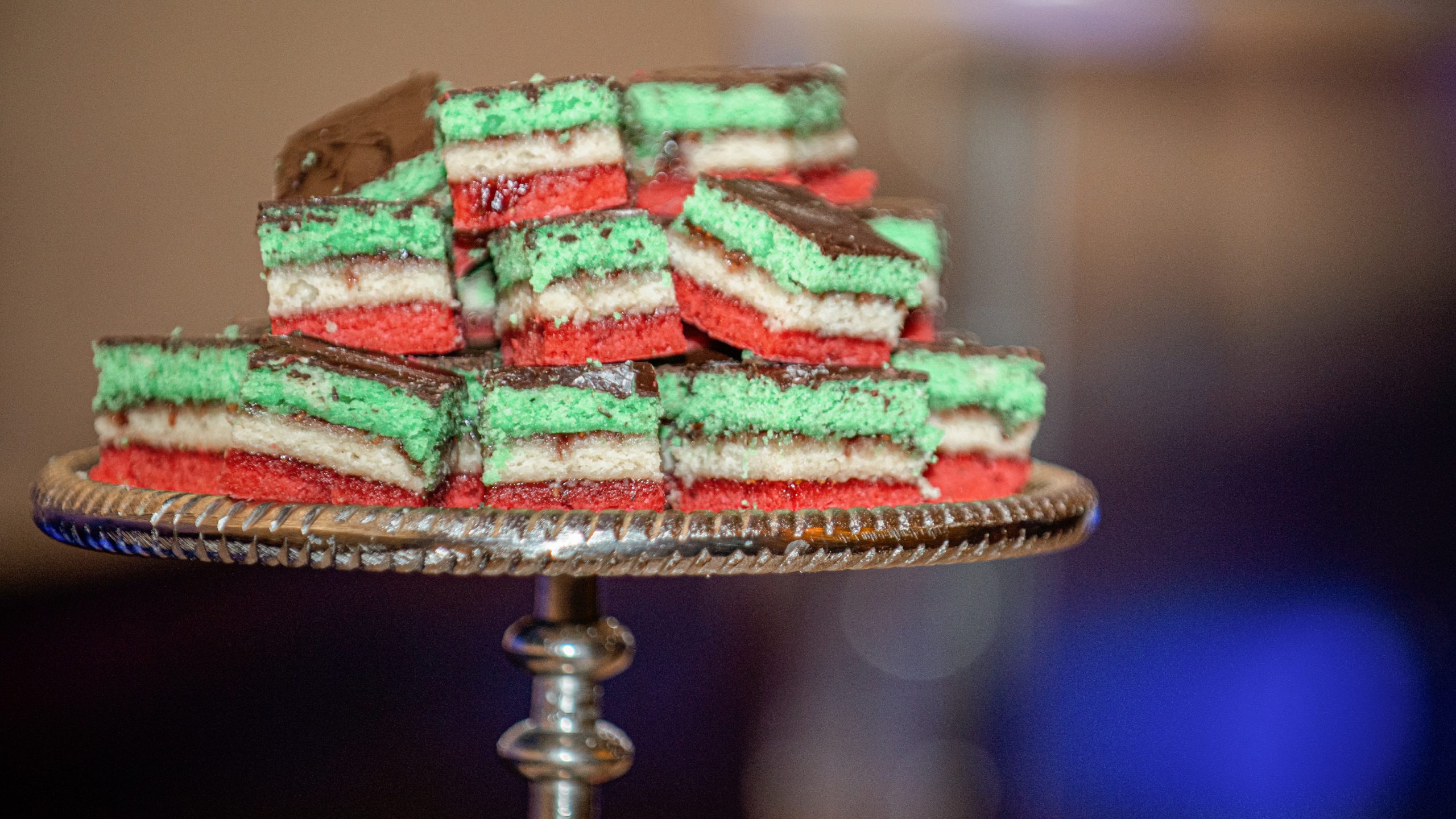Walk into any Italian bakery in the northeastern states, like New York or New Jersey, and you will most certainly find the famous rainbow or Tricolore cookies. Also known as Venetians, or Neapolitans, these classic Italian American treats are thin, dense layers of brightly colored layers of almond cake piled with jam, and frosted with chocolate. The original cookies were traditionally red, white, and green to resemble the Italian flag (hence, the name “Tricolore”), just another way to show off Italian pride.
While you may not find rainbow cookies in Italy, it is authentically an Italian American creation. In the early 1900s, the recipe was created by Italian immigrants as a way to honor their country of origin. Italian food historian Mary Taylor Simeti says that although these cookies have not been seen in Italy, it’s believed they were inspired by “gelato di Campagna”, a colorful Sicilian sweet treat with melted sugar and dried fruit. The rainbow cookie has become so popular that you can now find them mass-produced across the United States.
What is the Italian American Rainbow Cookie?

While it is commonly referred to as a cookie, it is actually a sponge cake-like texture. The dough is made from almond paste and marzipan and poured into sheet pans. Three different colored layers of cake go into the oven, typically reflecting the colors of the Italian flag but you can also find inventive colorful creations. Once out of the oven, a layer of jam, typically a stone fruit jam, is placed between each vibrant layer of cake. A glossy layer of chocolate is carefully spread at the top and bottom of the cookie to create the signature “seven-layer” design.
Jewish Influence Over The Cookie

The rainbow or Tricolore cookie has crossed over and made its way to the counters of Jewish-American delis. When Jewish refugees fled from Eastern Europe to America and settled in New York City, many settled within other immigrant communities, such as the existing Italian American neighborhoods. They became intrigued by the new creation of the rainbow cookie and took it upon themselves to alter the overall recipe, swapping butter for margarine and making the cookies square and flat. Choosing to use the cookie as a source of pride within their own community, Jewish refugees changed the colorful letters from red, white and green to blue, white and yellow.
AJ Forrisi
Assistant Editor for America Domani, AJ Forrisi is a Brooklyn-based writer and photographer. His work focuses on food, travel, sports, landscapes, and urban scenes. You can find him on Instagram @aj.photo.works.


